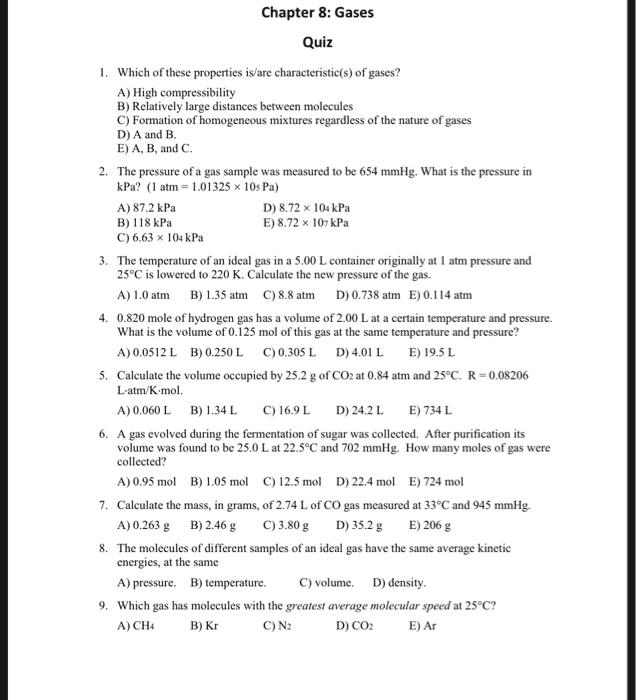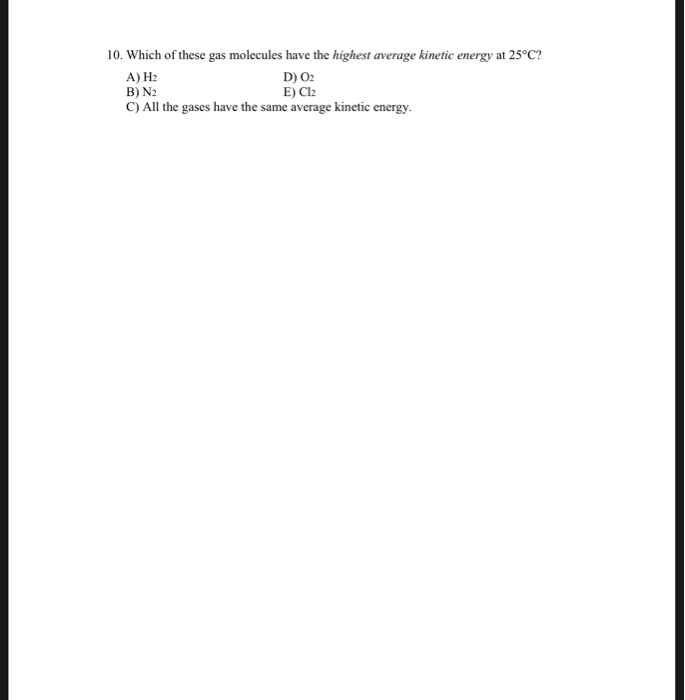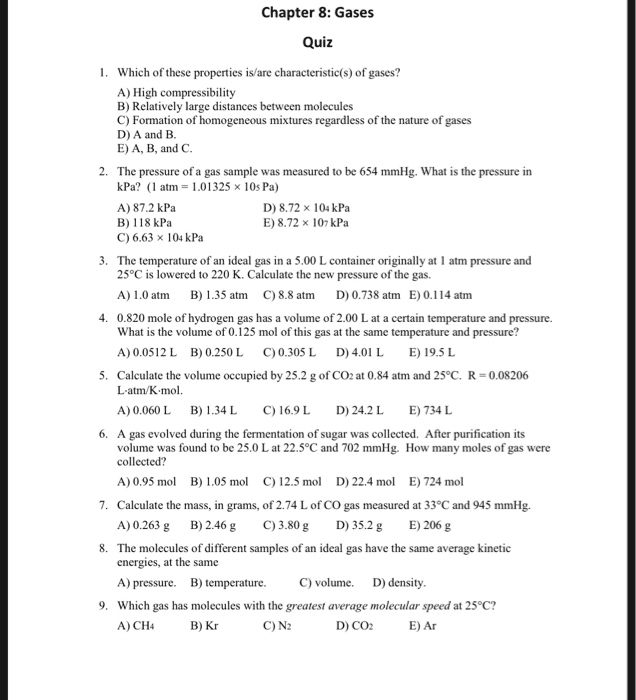CHEM 1311 Chapter 11: Chapter 11 Gases
56 views3 pages
3 Dec 2016
School
Department
Course
Professor
Document Summary
H, n, o, f, ne, cl, he, ar, kr, xe, rn. They assume the shape and volume of their containers. Gases have much smaller densities than the other phases. The density varies depending on temperature and pressure. No matter the proportion, gases will from uniform, homogenous mixtures. Kinetic molecular theory: explains how the molecular nature of gasses gives rise to the macroscopic properties. The following the 4 basic assumption of the theory. Volume occupied by individual molecules is essentially negligible. Gases are compressible and can be moved closer together by decreasing volume. They bounce off the container"s walls and each other in straight paths. Perfectly elastic collisions where energy is transferred not lost. Gas molecules do not give off attractive or repulsive forces. The average kinetic energy is proportional to absolute temperature. Urms directly proportional to square root of absolute temp. Urms i(cid:374)ve(cid:396)sely p(cid:396)opo(cid:396)tio(cid:374)al to s(cid:395)ua(cid:396)e (cid:396)oot of . This tells us that for gasses at the same temperature,
Get access
Grade+
$40 USD/m
Billed monthly

Homework Help
Study Guides
Textbook Solutions
Class Notes
Textbook Notes
Booster Class
10 Verified Answers
Class+
$30 USD/m
Billed monthly

Homework Help
Study Guides
Textbook Solutions
Class Notes
Textbook Notes
Booster Class
7 Verified Answers
Related textbook solutions
Chemistry: Structure and Properties
2 Edition,
Tro
ISBN: 9780134293936
Basic Chemistry
5 Edition,
Timberlake
ISBN: 9780134138046
Principles of Chemistry Molecular Approach
4th Edition,
Tro
ISBN: 9780134112831
Principles of Chemistry Molecular Approach
3rd Edition, 2014
Tro
ISBN: 9780321971944
Chemistry: Structure and Properties
2nd Edition,
Tro
ISBN: 9780134293936
Chemistry: A Molecular Approach
3rd Edition,
Tro
ISBN: 9780321809247
Chemistry: A Molecular Approach
5th Edition,
Tro
ISBN: 9780134874371
Principles of Chemistry: A Molecular Approach
4th Edition,
Tro
ISBN: 9780134895741
Chemistry: The Central Science
14th Edition, 2017
Brown
ISBN: 9780134414232


